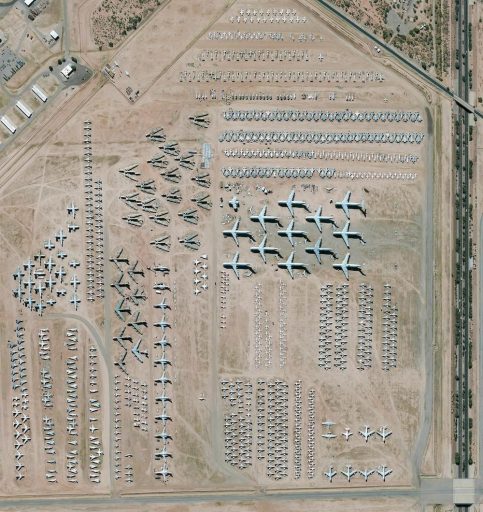
It all started with an educational video. Benjamin Grant grew up as one of those kids fascinated by the idea of outer space, and our place in the universe. He ended up starting a “space club” at his first post-university job in New York, where everyone “ate lunch by themselves, at their desk, every day,” as a way to get them talking. But before he turned that passion into a book of frankly stunning satellite-view photos of the Earth, taken from above, things began with a fairly unassuming film in school.
“In the US there’s a video called Powers of Ten,” he says,
“where they start with a guy in the park and they zoom out and zoom out exponentially until you’re all the way in outer space. Then they zoom back in to do a microbiology thing. But I think, in our culture, this idea of space isn’t necessarily embraced, or is kind of nerdy, or very far removed from everyday life.”
So he’s doing his best to pull that idea back into people’s minds, with a new book, Overview: A New Perspective. It picks up its name from the “overview effect,” a term coined in the 80s by astronaut Frank White to describe the way your understanding of life and its meaning shifts once you’ve been shot into space and seen the planet as a pale blue dot. It’s part of what takes people’s breath away when they look at Earthrise, astronaut William Anders’ 1968 photo of the planet. Basically: holy shit, we are really insignificant and tiny.
“I think the official statistic is that 552 people have ever been in outer space, so to bring that perspective to many more people every day is powerful,”
Grant says. As far as the book goes, he’s largely left us out of it: the photos are taken by a fleet of four satellites owned by a company called DigitalGlobe, and generally on such a huge scale that you wouldn’t be able to make out a single person anyway.
“There are no people visible in the pictures,” he says, “but the way the chapters in the book are structured tries to frame the human presence—in all but the last chapter. It’s trying to understand the world that we’ve shaped, without necessarily saying it’s good or bad.”
What you end up with is a coffee table book that could give you an existential crisis. Beautiful images, of everything from an exploding volcano on a Japanese island to the patterns created by human irrigation systems, fill its pages. It’s often hard to wrap your head around just what you’re looking at, which Grant acknowledges.
“The scale is often beyond comprehension, and even if you start to put numbers down—saying the approximate area shown in this overview is 200 square miles—that doesn’t necessarily mean something to people. So a lot of the images are composed very purposely so that there might be elements you can recognize in them, whether it’s a car or a sports track. You can see that and go, ‘OK, I know how big that is,’ then look at the larger image and keep flipping back and forth between those two things.”
Making that mental shift from your own perspective on earth to that of the satellite becomes a central part of flicking through the book—what Grant calls a sort of “duality of presence.” He continues:
“If I do a good job composing an image, for a second you go up into the satellite camera and it serves as our eyes looking straight down and imagining this vast amount of area. Then you go back down to earth and you’re like, ‘oh I don’t get it,’ and you keep looking closer to try and get a sense of scale. I think that’s a healthy exercise, feeling that confusion, because we don’t often think ‘bigger picture.'”
You probably wouldn’t be able to get much done on a day-to-day if you only thought on this sort of scale, but there’s something undeniably arresting about these photos. To be clear, Grant didn’t take them himself, but has been allowed to post them daily on the Daily Overview Instagram account after coming to an agreement with that satellite photography company, DigitalGlobe.
Grant realized they’re the people behind most of the images you see when you look at Apple Maps or Google Earth, when he initially typed “earth” into his search bar while preparing a space club talk. He ended up being zoomed into a photo DigitalGlobe owned—of Earth, Texas. The company’s been at it for 15 years, Grant says, and after convincing them his project wasn’t some kind of terror plot, they signed up to this project.
“I don’t think, surprisingly, they’d ever thought to do this before. They’re primarily of the engineering mindset, which is: ‘We’re creating these images and people can buy them if they want to.’ I’m sure their number one customer is the US government, so at first when I approached them they were very unsure, saying ‘Who are you? We’re going to do a background check on you,'” he says, laughing.
Grant speaks about Overview with a disarming earnestness. While he isn’t setting out to change the world, by any means, he tells me that he’s been in contact with two teachers in the US who use specific Overview photos to teach their secondary school students mathematical concepts. In his own way, he’s gone full-circle with his love for space—right back to the classroom.
Photos by Benjamin Grant;
Words: Tshepo Mokoena;

